Jon A
Well-Known Member
OK folks, here are some pics and first impressions of the SWFA SS 5-20X50HD. This is just a prototype but it's very close to the final version. Enjoy:
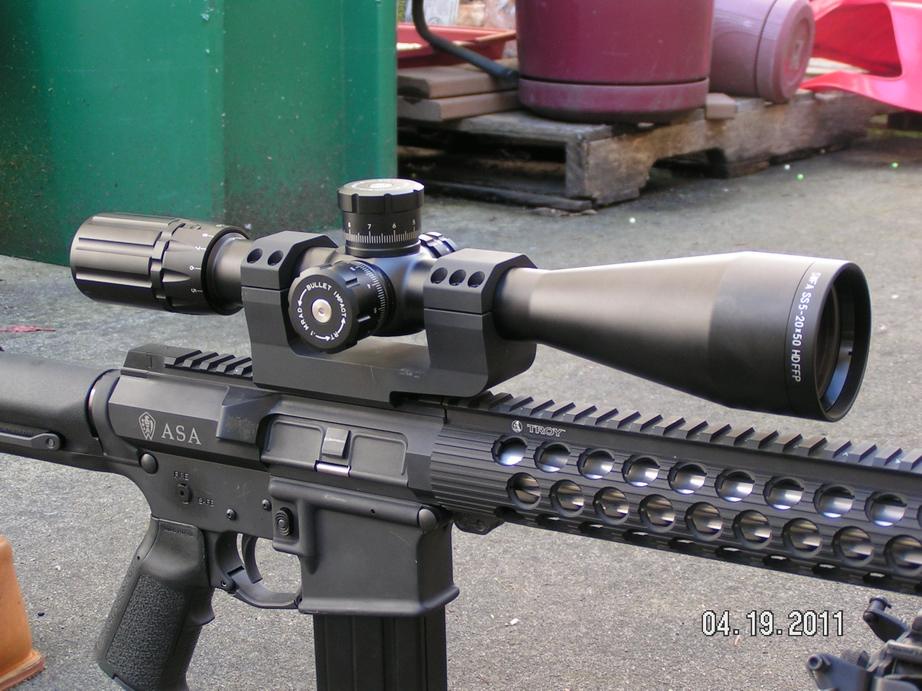
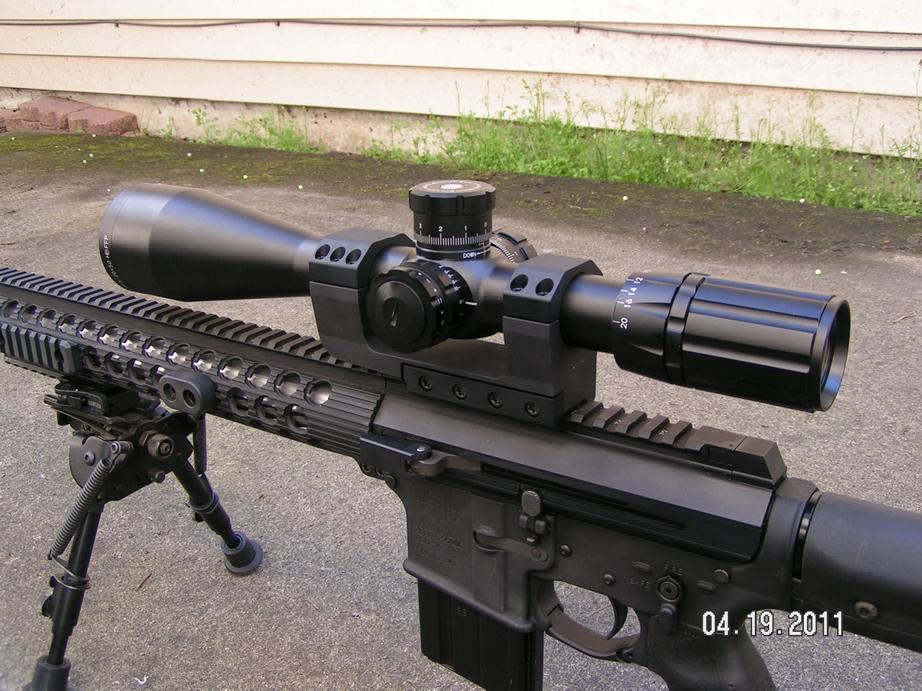
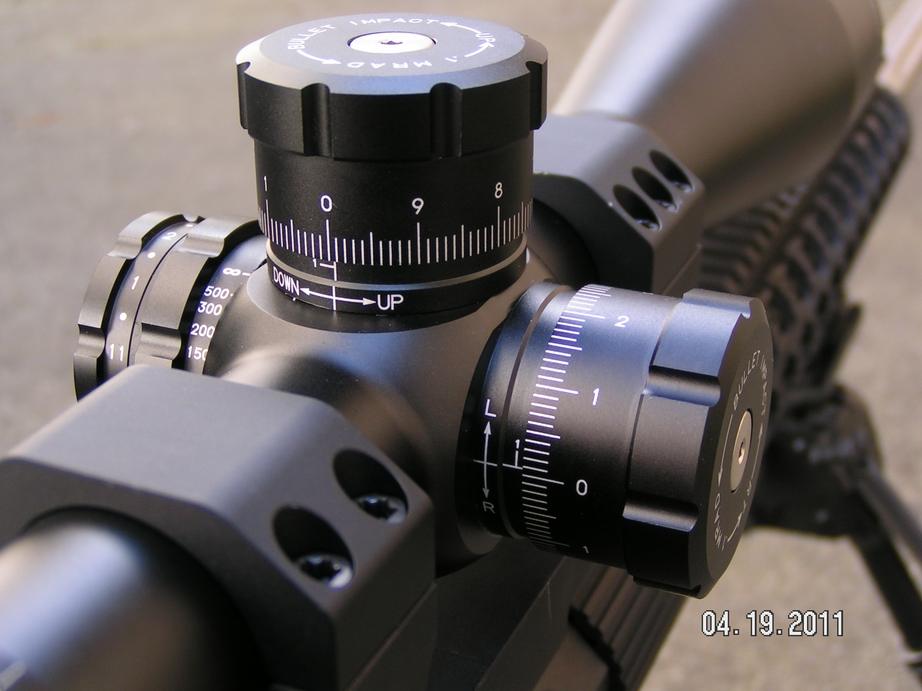
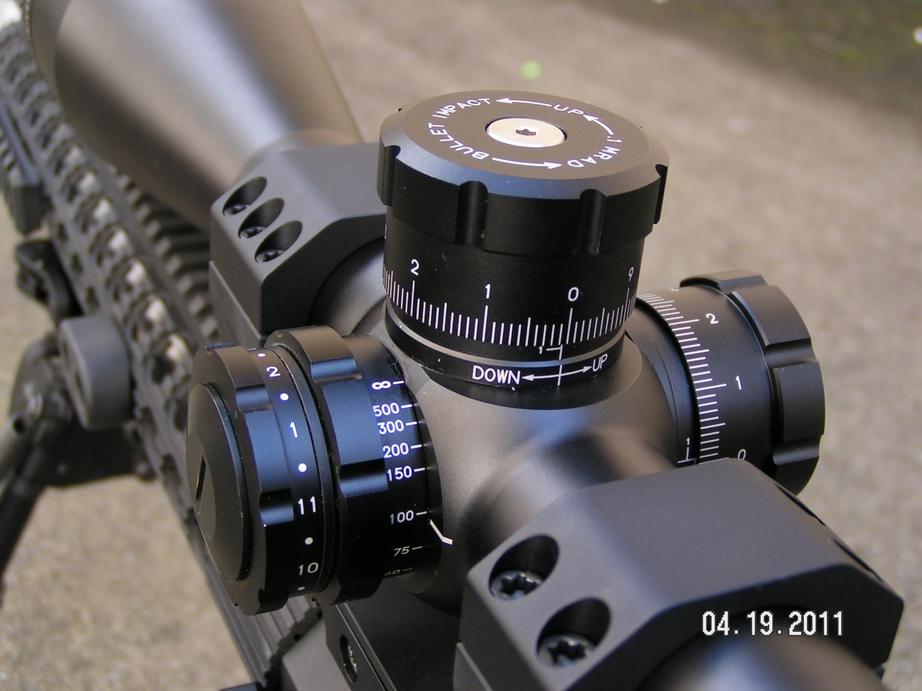
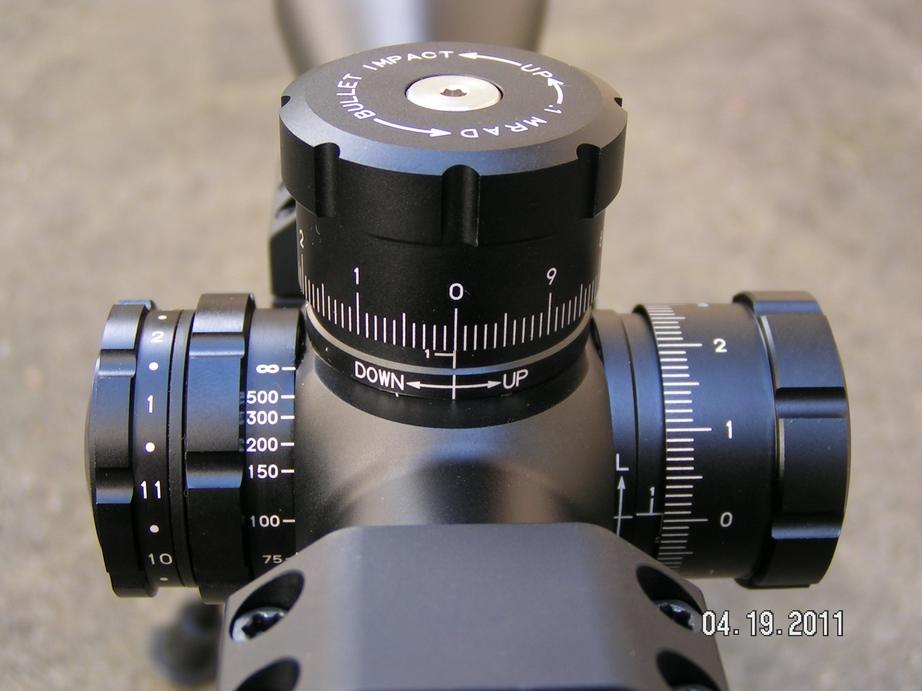
And to the reticle.
5X
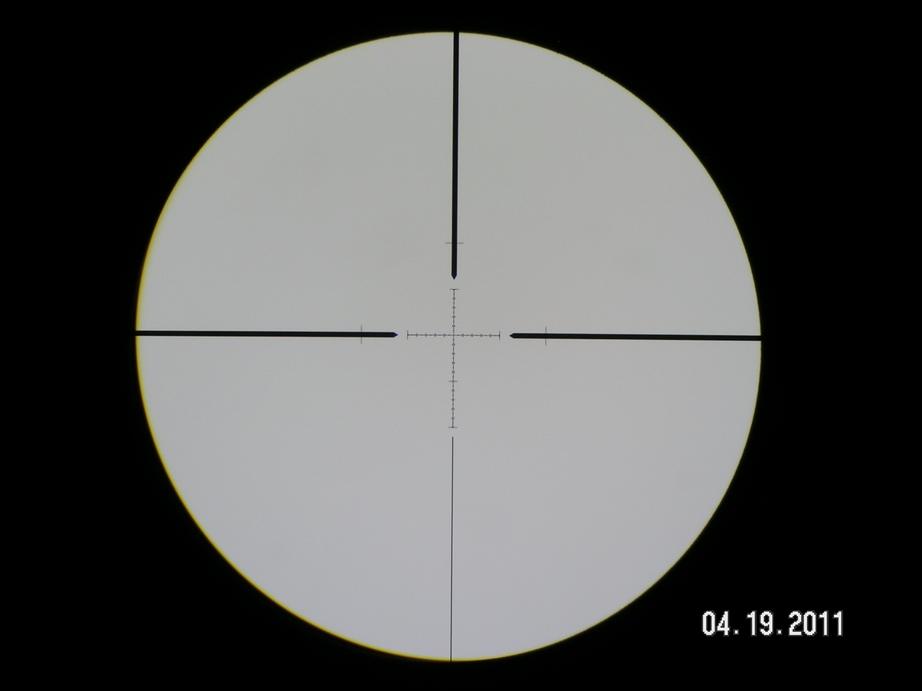
10X
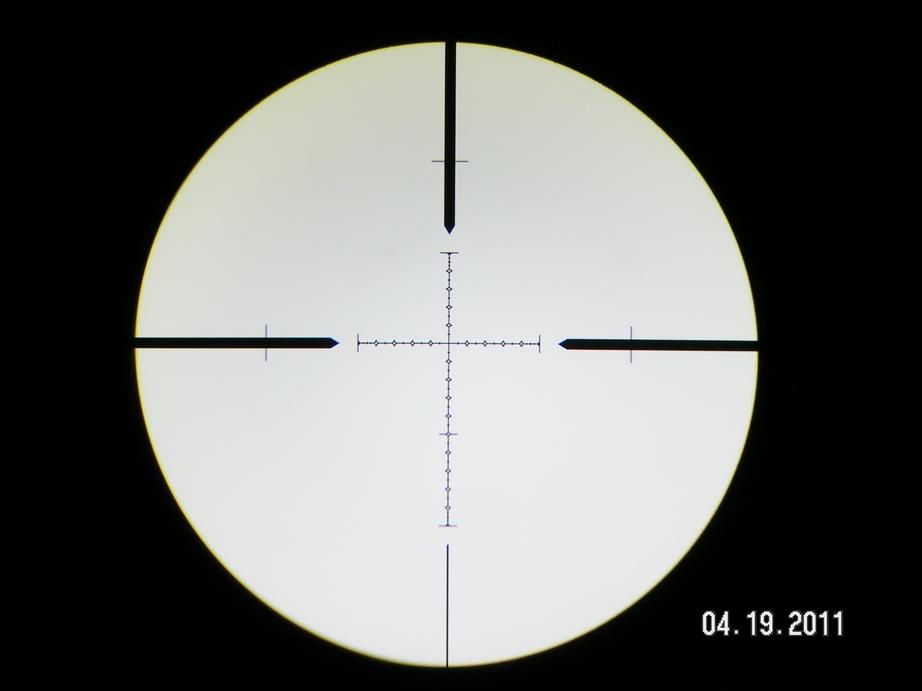
20X
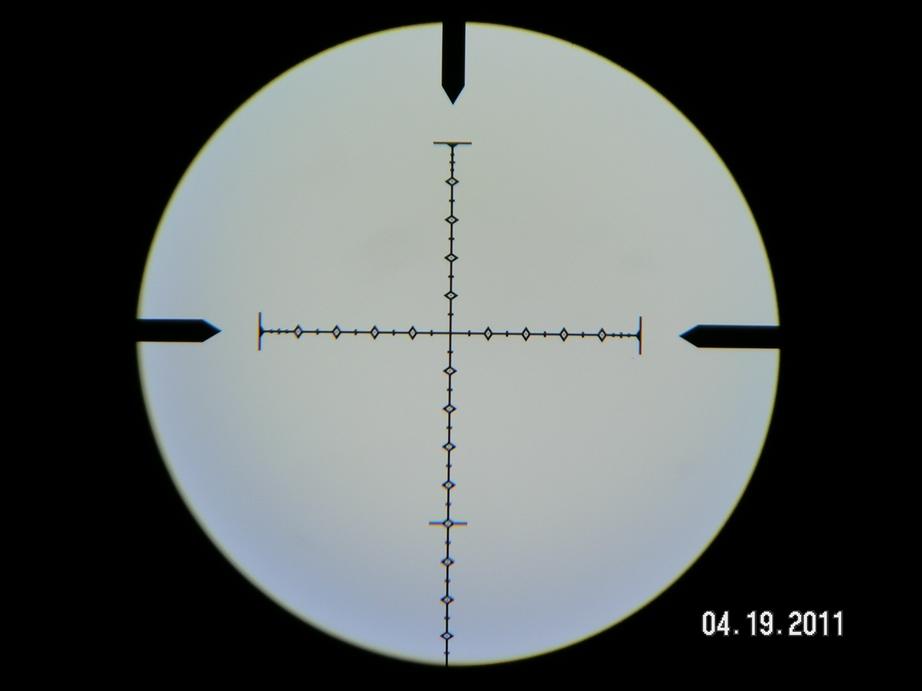
Closup:
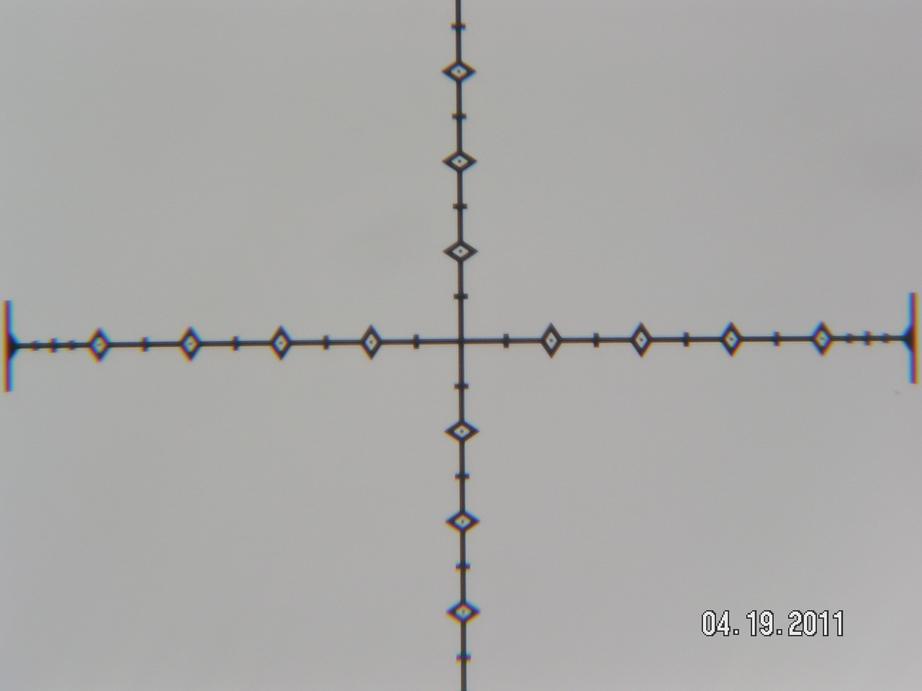
I've only had it a short time but have made it to the range once:
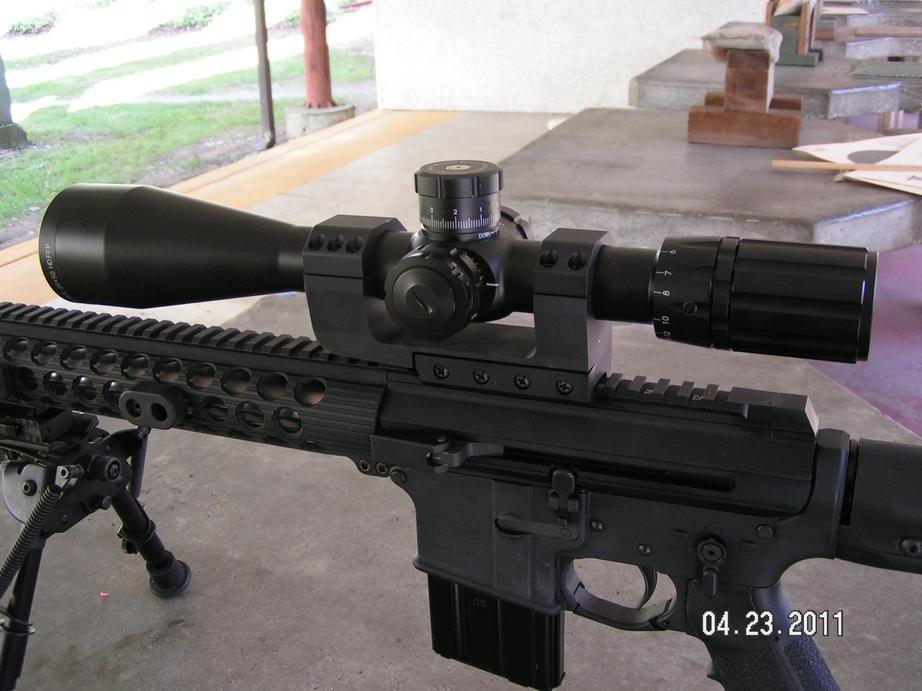
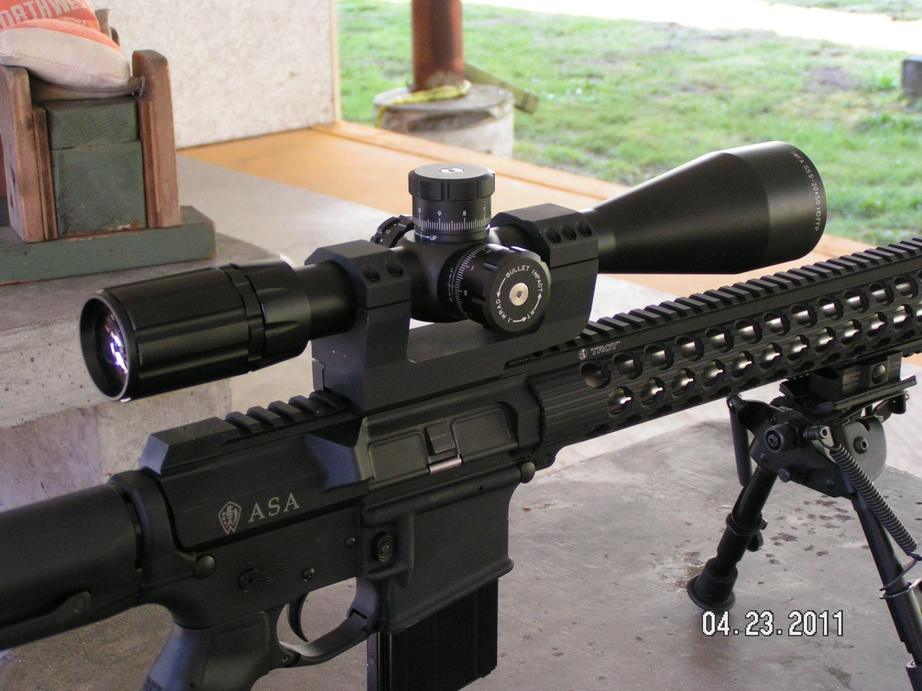
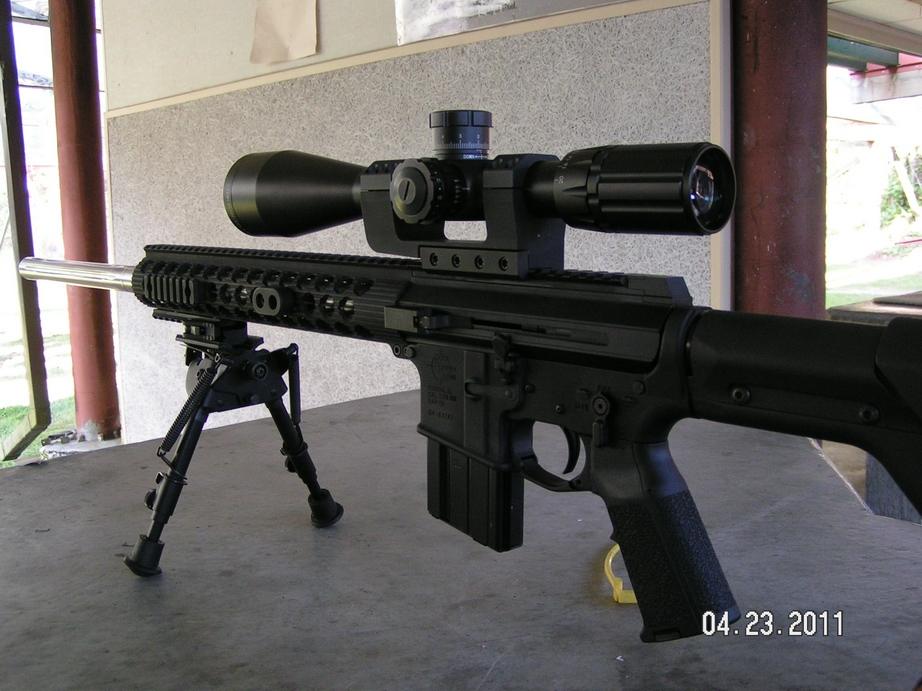
At 100 yds:
5X
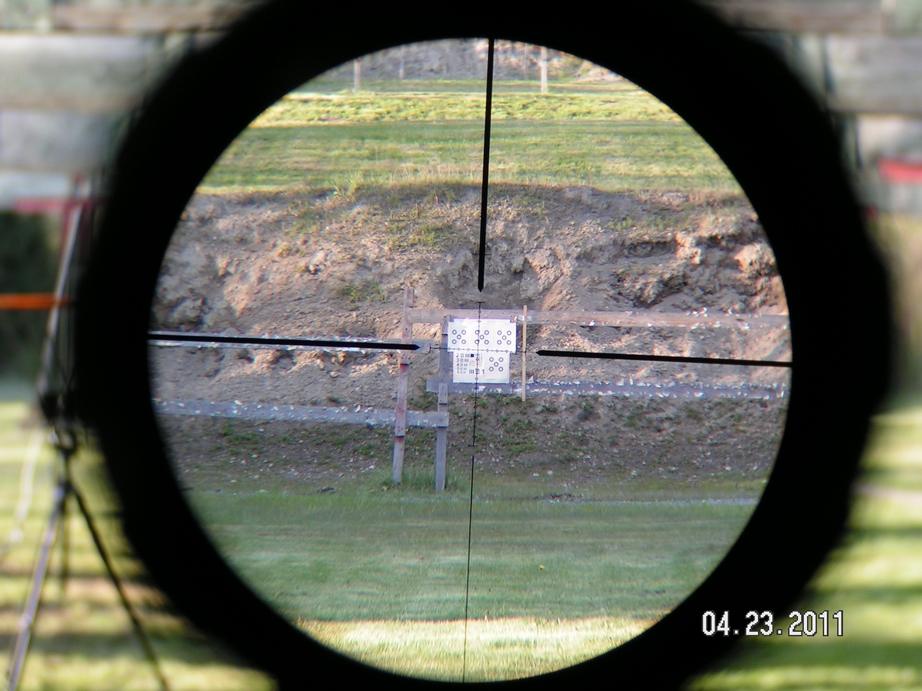
10X
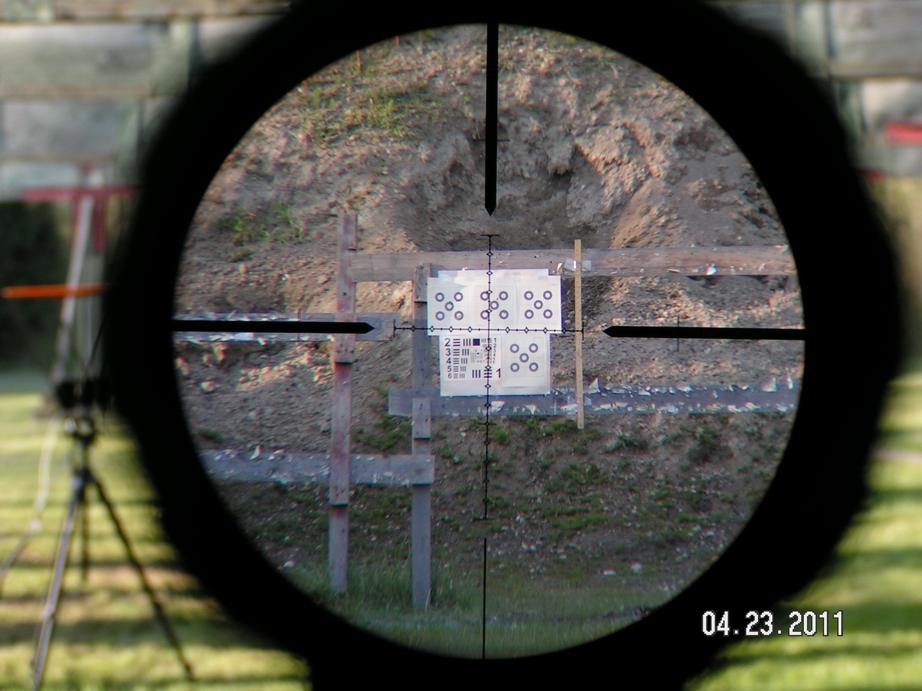
20X
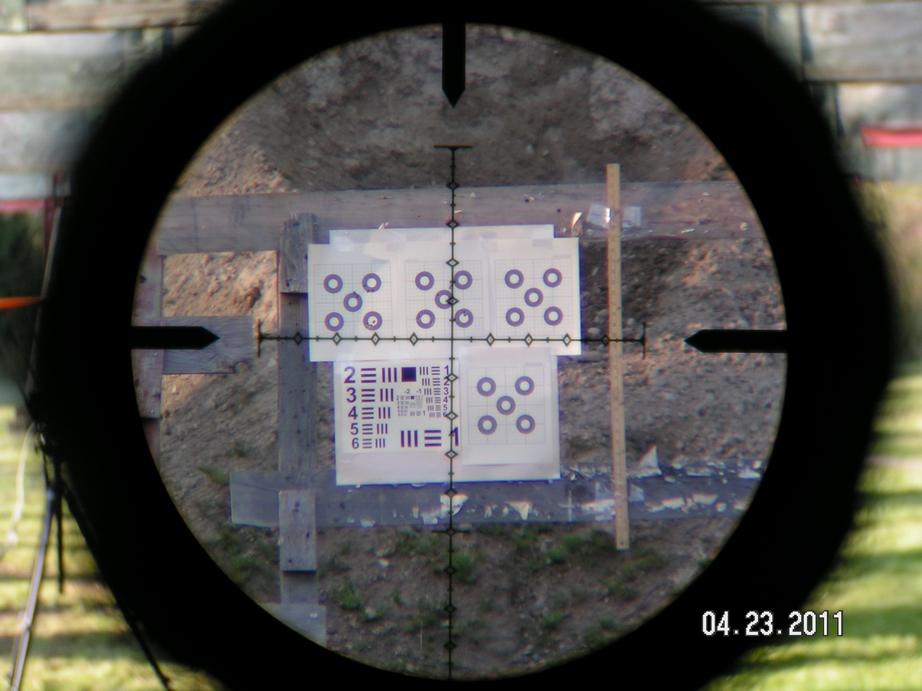
At 300 Yds:
5X
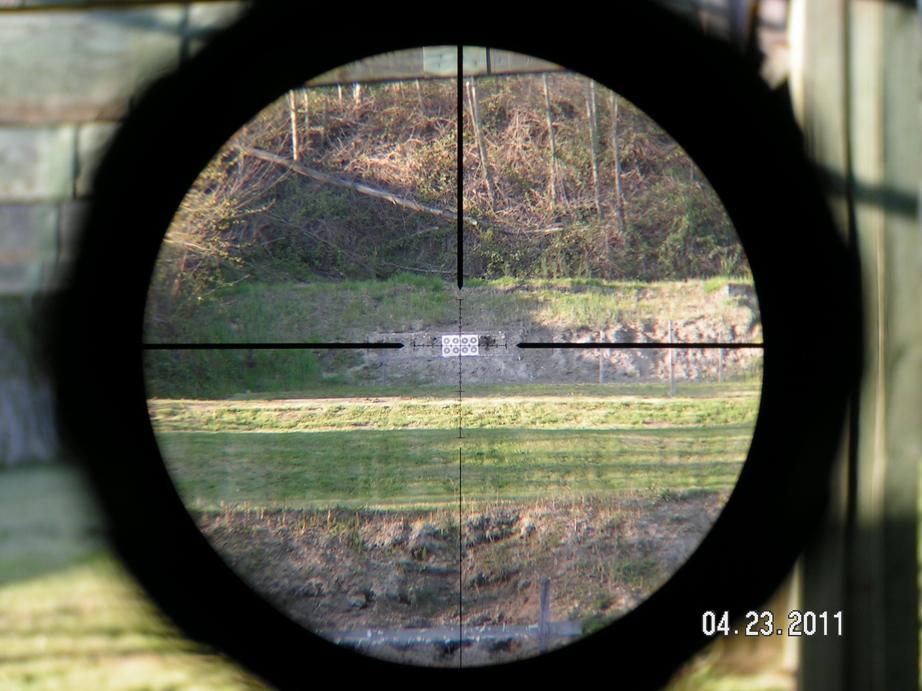
10X
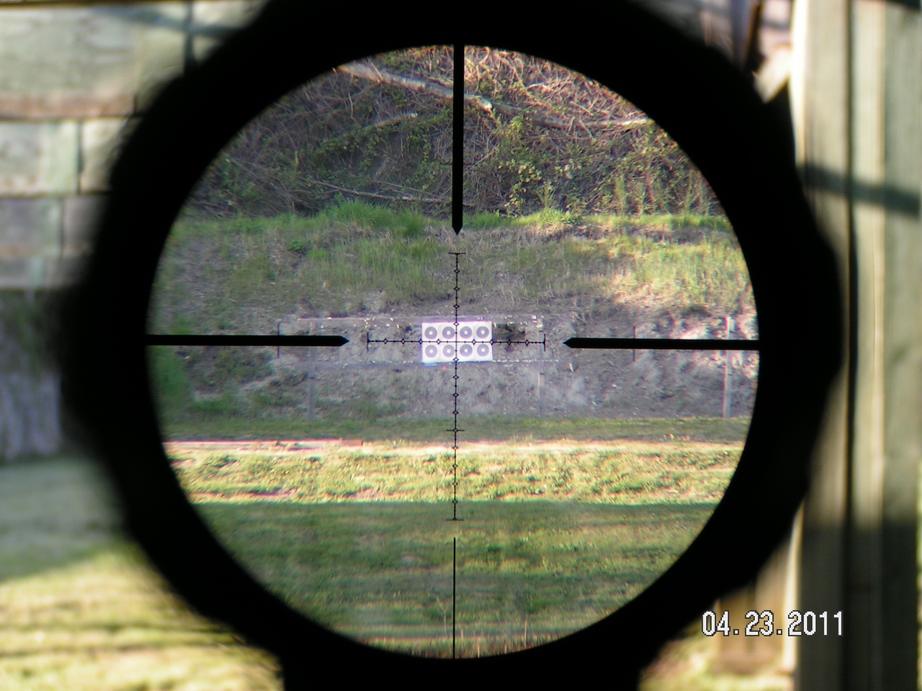
20X
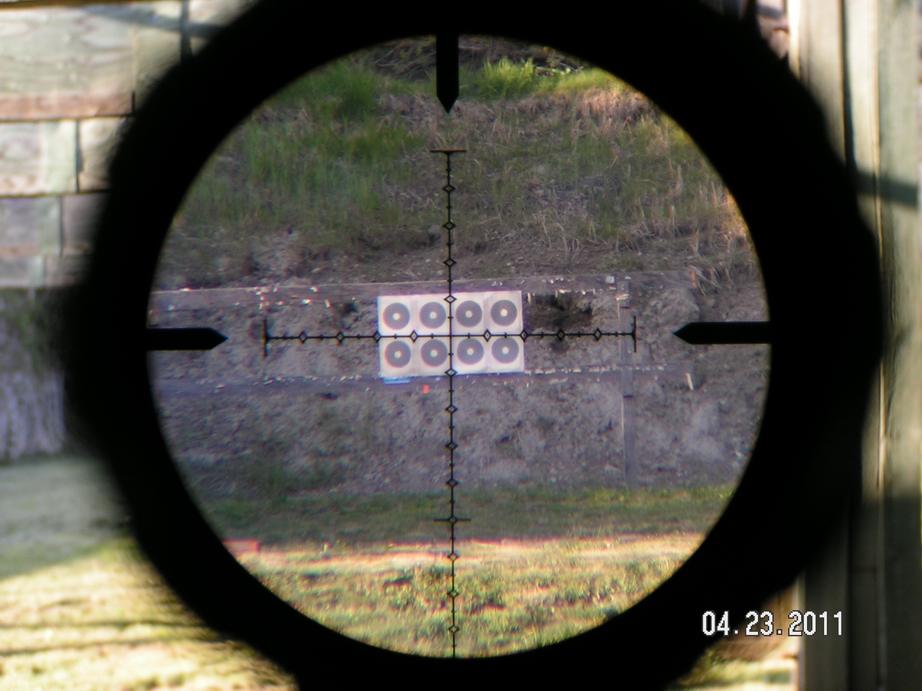
After a few shots at 100 I moved to 300 and these were the groups:
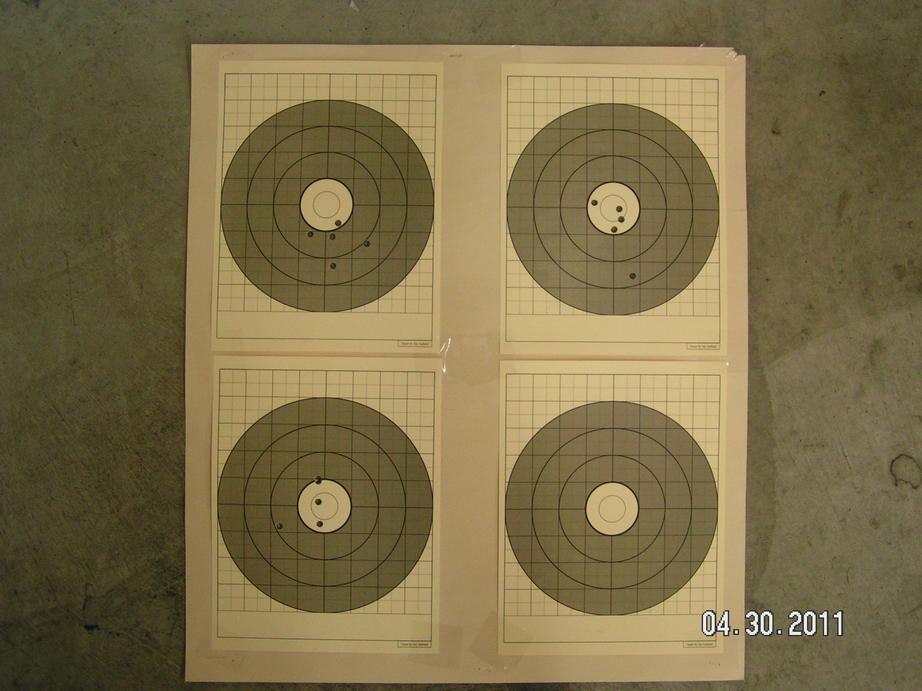
A couple 2"ers, 8 of my last 10 shots went into the 2" center of the bull which is pretty good for a gas gun. The scope gets it done very easily.
Here's the illumination:
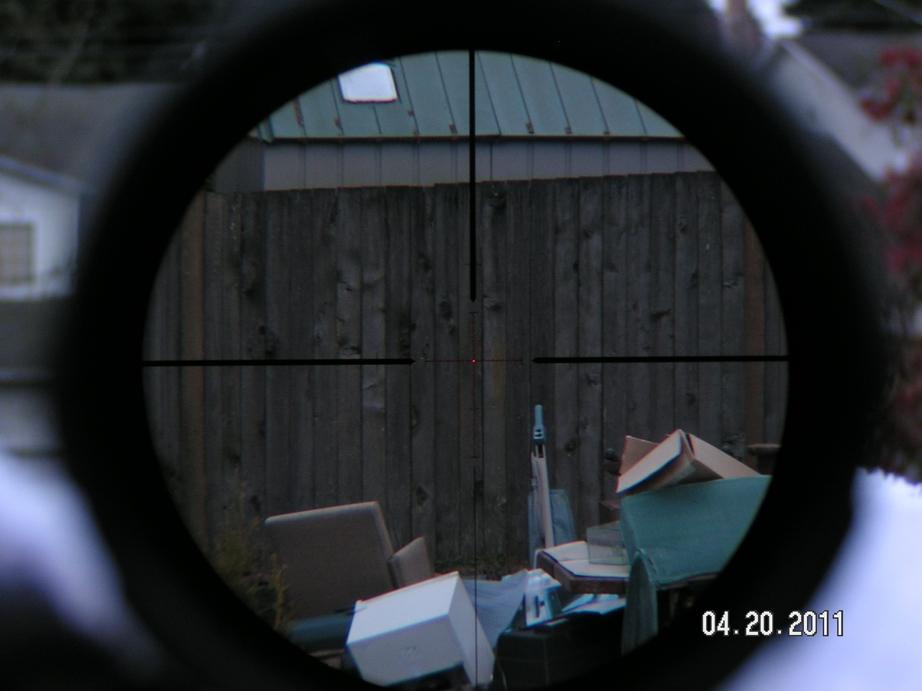
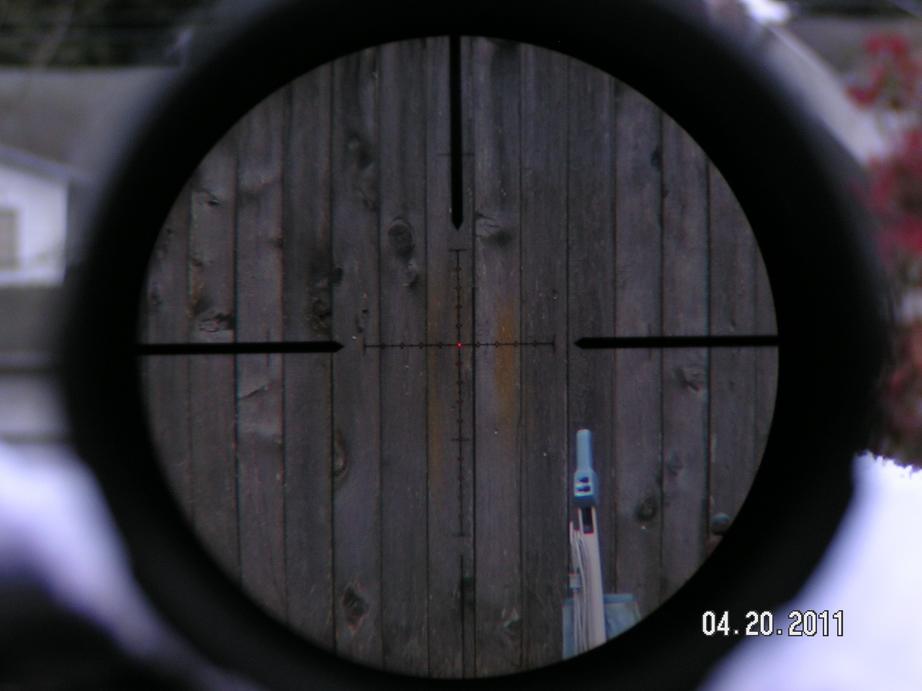
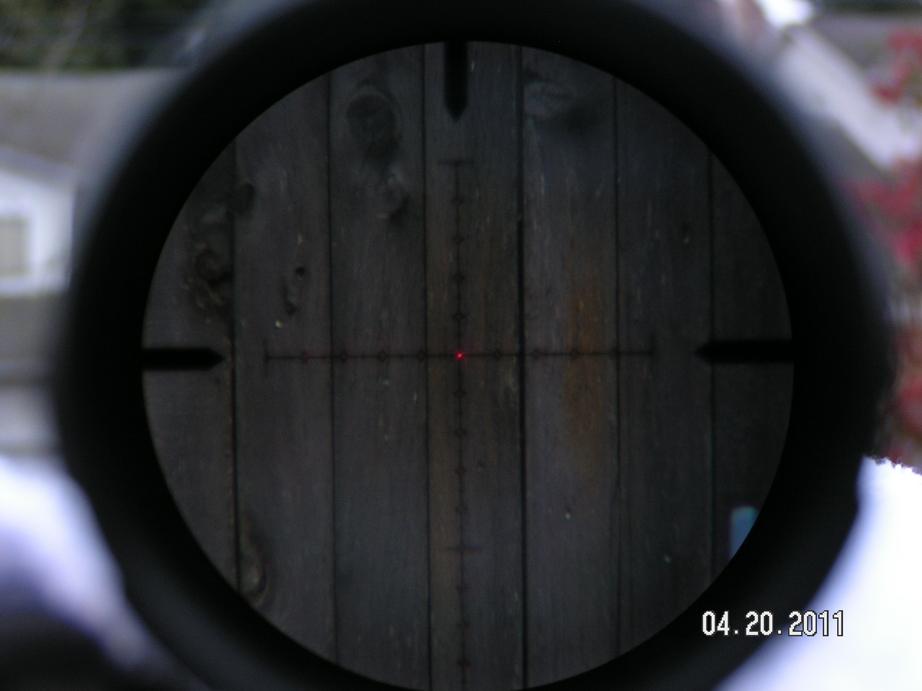
Reticle checked for straightness and click value measured right on as accurately as I can measure. About 33.5 Mils (115 MOA)of total elevation adjustment. In the 20 MOA AADMOUNT I've got 22.5 Mils (over 77 MOA) of "up" adjustment left from my 100 yd zero.
Glass is OUTSTANDING!
A couple specs people have been asking about: It's about 14.6" long, 31.5 oz, 30mm tube, very similar to the F1 in size/overall envelope. This prototype has no zero stop but they are working on one.
The clicks feel as good as I've felt on anything. Very positive, snappy with a very loud metallic clicking sound on each one.
The eyebox is as good or better than any of the ~20X scopes I have around, certainly no problems there. The eye relief is quite long, especially on 20X at around 4". It's eye relief doesn't stay perfectly constant but doesn't change as much as some brands throughout the power range. Since it actually gets a little bit longer on high powers it's not something you notice in a negative way.
I don't yet have any info on price/availability. This is a much bigger more expensive scope to make than the fixed 10XHD which goes for $800. It isn't meant to compete in the PST price range, but in the F1/Razor/Light Tacital, etc range. I hope it will come in significantly cheaper than those because I'd like to buy at least a couple but I don't expect them to give them away. This is a high dollar scope.
Glass quality in low light, etc...... I have done some comparing:
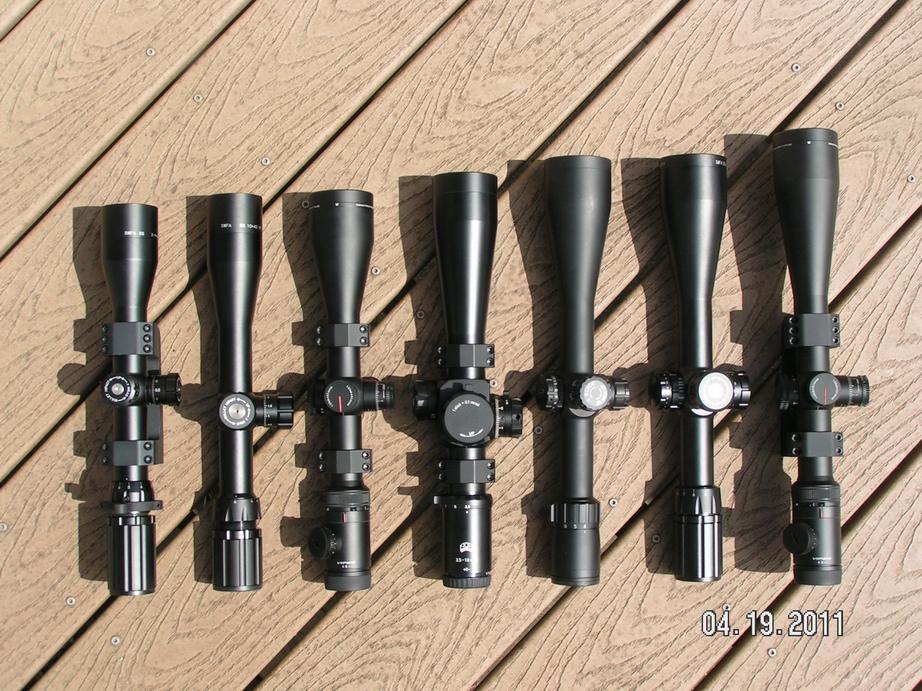
Of those the one that compares is the IOR. It's noticably better than the Weaver 4-20 and PST 6-24.
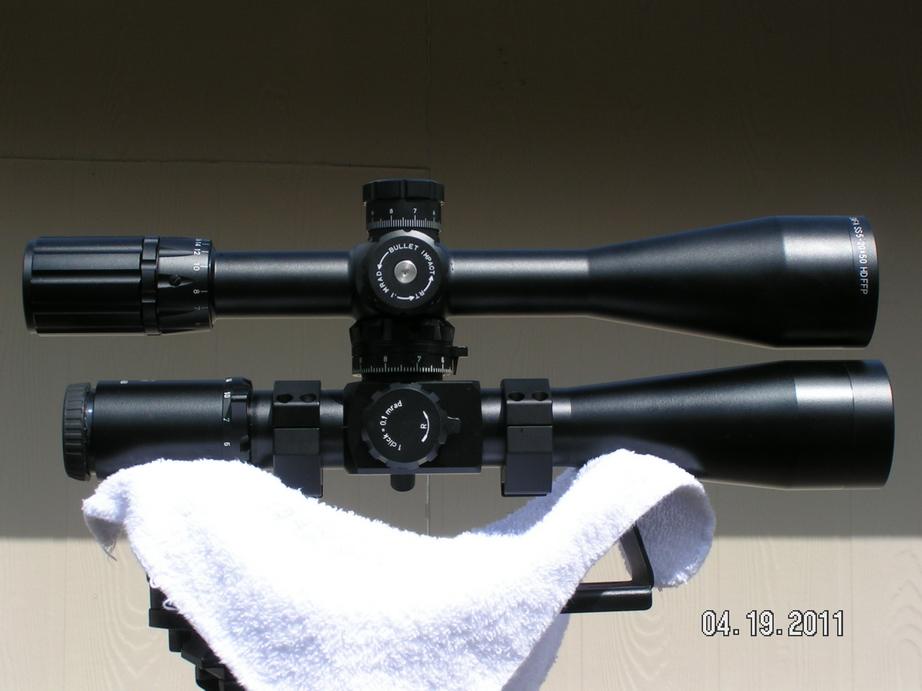
For those who have the 3.5-18, you know how good it is. I found it very close in most measures to my Premier in the past:
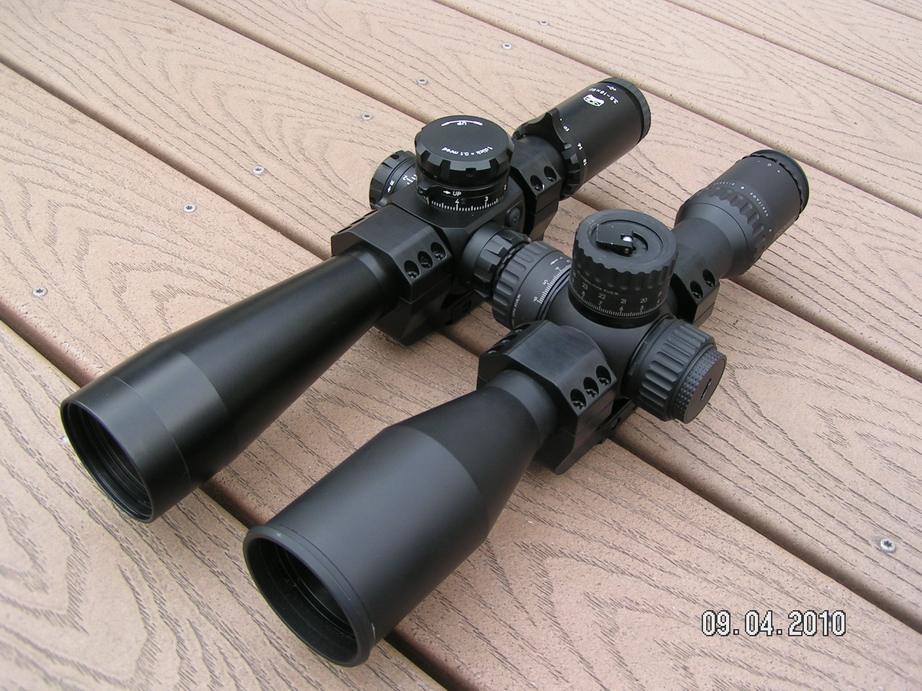
Between the IOR and the SS, they're so close I can't really declare a winner. Resolution wise I can't tell which one is better. Staring at a chart through one I'll think it's better, then staring at the chart through the other I'll think it's better. They're that close. The IOR seems to have more of a contrasty "pop" to the image which might give it more of a "warm fuzzy to the eyeball" view in good light. But the more neutral colors of the SS make it nicer to look through in low light.
In short, good freaking glass.
Here are a couple pics I tried to show the low light/illumination in action. This was a good 30 minutes after official sundown so it's pretty darn dark. The camera makes it look lighter than it really is. The pole is around 300 yds away:
IOR on 10X:
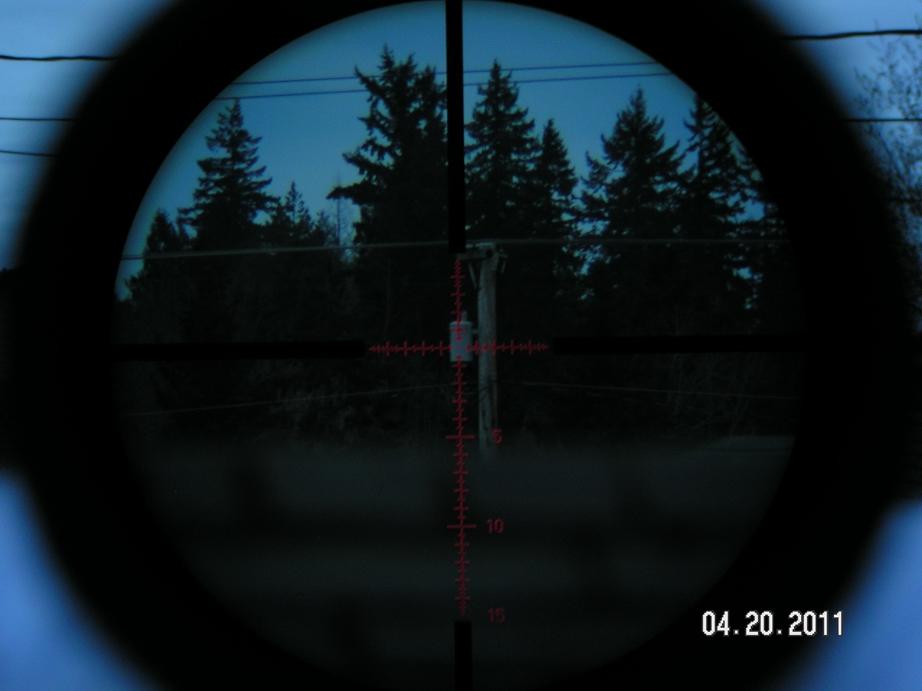
SS on 10X:
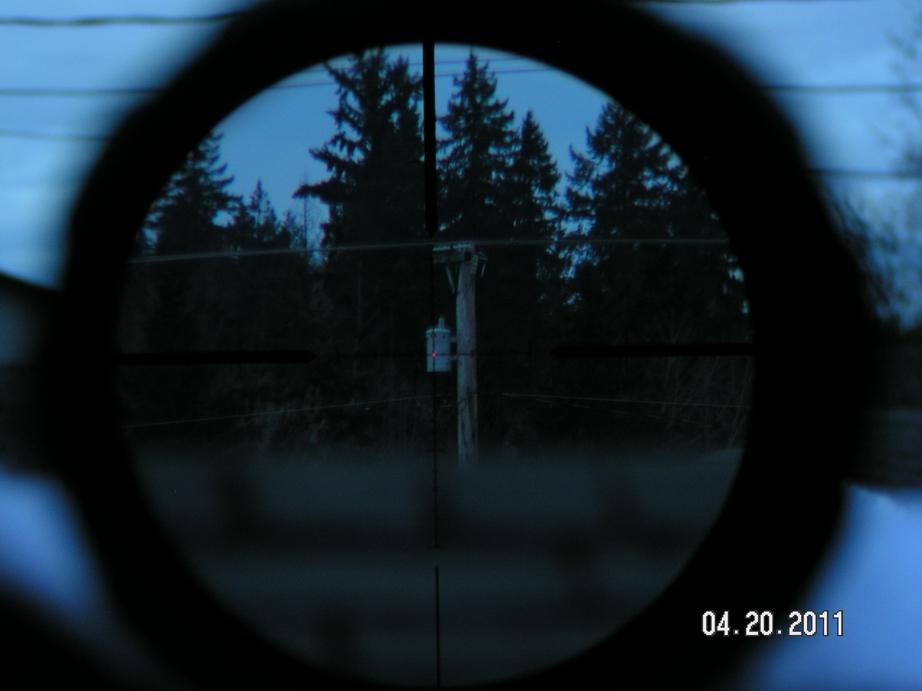
IOR on 18X:
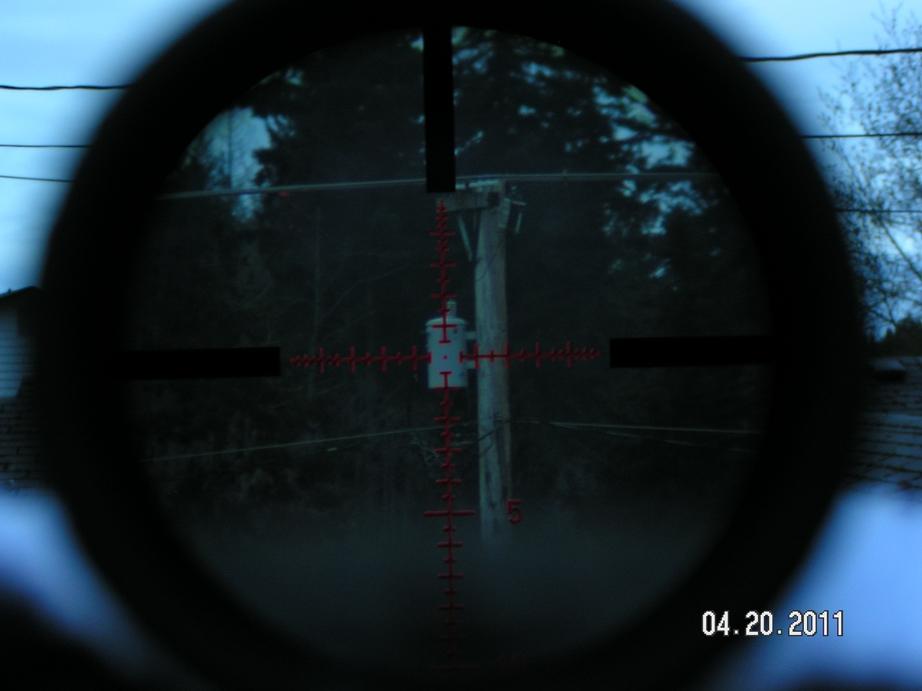
SS on 20X:
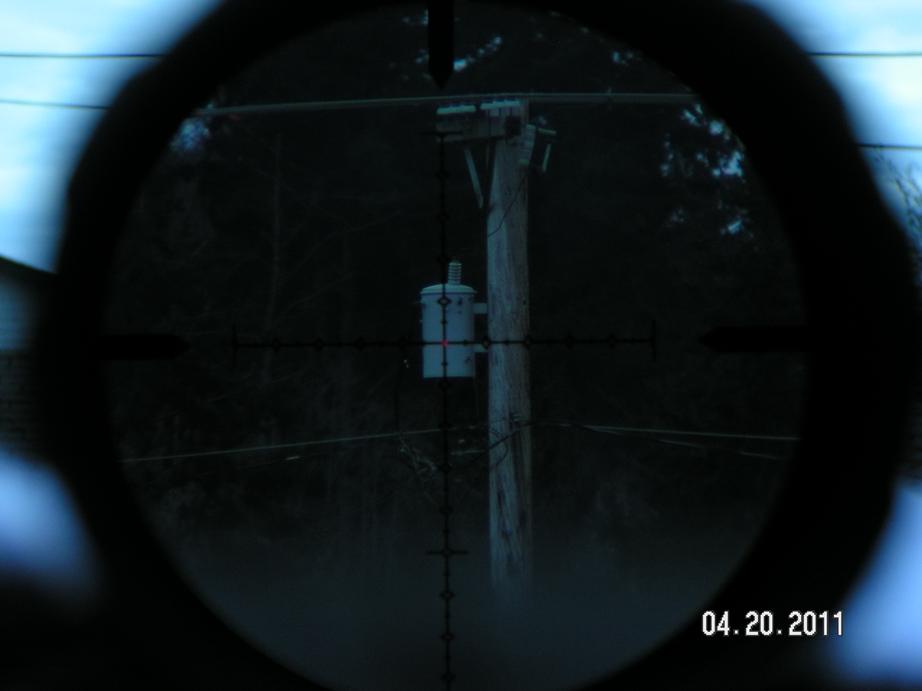
Keep in mind you can't judge the optical quality via the pics as they're both better than my picture taking makes them look. However, you can't take a good pic through a bad scope and every time I look at that last pic of the SS it's just amazing to me the detail it picks up at 300 yds in the dark! A lot of higher powered scopes that look OK in the day time really take a crap when you crank the power up in low light, there's no hint of that with this one.
Some more questions:
And to the reticle.
5X
10X
20X
Closup:
I've only had it a short time but have made it to the range once:
At 100 yds:
5X
10X
20X
At 300 Yds:
5X
10X
20X
After a few shots at 100 I moved to 300 and these were the groups:
A couple 2"ers, 8 of my last 10 shots went into the 2" center of the bull which is pretty good for a gas gun. The scope gets it done very easily.
Here's the illumination:
Reticle checked for straightness and click value measured right on as accurately as I can measure. About 33.5 Mils (115 MOA)of total elevation adjustment. In the 20 MOA AADMOUNT I've got 22.5 Mils (over 77 MOA) of "up" adjustment left from my 100 yd zero.
Glass is OUTSTANDING!
A couple specs people have been asking about: It's about 14.6" long, 31.5 oz, 30mm tube, very similar to the F1 in size/overall envelope. This prototype has no zero stop but they are working on one.
The clicks feel as good as I've felt on anything. Very positive, snappy with a very loud metallic clicking sound on each one.
The eyebox is as good or better than any of the ~20X scopes I have around, certainly no problems there. The eye relief is quite long, especially on 20X at around 4". It's eye relief doesn't stay perfectly constant but doesn't change as much as some brands throughout the power range. Since it actually gets a little bit longer on high powers it's not something you notice in a negative way.
I don't yet have any info on price/availability. This is a much bigger more expensive scope to make than the fixed 10XHD which goes for $800. It isn't meant to compete in the PST price range, but in the F1/Razor/Light Tacital, etc range. I hope it will come in significantly cheaper than those because I'd like to buy at least a couple but I don't expect them to give them away. This is a high dollar scope.
Glass quality in low light, etc...... I have done some comparing:
Of those the one that compares is the IOR. It's noticably better than the Weaver 4-20 and PST 6-24.
For those who have the 3.5-18, you know how good it is. I found it very close in most measures to my Premier in the past:
Between the IOR and the SS, they're so close I can't really declare a winner. Resolution wise I can't tell which one is better. Staring at a chart through one I'll think it's better, then staring at the chart through the other I'll think it's better. They're that close. The IOR seems to have more of a contrasty "pop" to the image which might give it more of a "warm fuzzy to the eyeball" view in good light. But the more neutral colors of the SS make it nicer to look through in low light.
In short, good freaking glass.
Here are a couple pics I tried to show the low light/illumination in action. This was a good 30 minutes after official sundown so it's pretty darn dark. The camera makes it look lighter than it really is. The pole is around 300 yds away:
IOR on 10X:
SS on 10X:
IOR on 18X:
SS on 20X:
Keep in mind you can't judge the optical quality via the pics as they're both better than my picture taking makes them look. However, you can't take a good pic through a bad scope and every time I look at that last pic of the SS it's just amazing to me the detail it picks up at 300 yds in the dark! A lot of higher powered scopes that look OK in the day time really take a crap when you crank the power up in low light, there's no hint of that with this one.
Some more questions:
If PD's is all you want to do, of course a SFP scope with a thinner reticle is the natural choice. However this scope's reticle is pretty thin as FFP goes, covering less than 1" at 500 yds so it should do well. If that PD is really little and really far away, you can crank the turrets 1 mil in any direction and use the little dot inside one of the diamonds. At .03 Mil diameter it's tiny.tahqua said:Thanks for the great pics and descriptions Jon!
It is too hard for me to tell from the pictures, but do you think this tactical scope would work for PD's.
It's marked down to 35 yds and that seems pretty accurate.mavrick10_2000 said:How close does the parallax focus at?
About 33.5 Mils (115 MOA or so).mscott said:Definately interested. How much elevation travel does it have?
